What gets rid of plantar warts. Effective Plantar Wart Treatments: Natural Remedies and Medical Interventions
What causes plantar warts. How to identify plantar warts. Can plantar warts go away on their own. What are the fastest natural remedies for plantar warts. Which medical treatments are most effective for plantar warts. When should you see a doctor for plantar warts.
Understanding Plantar Warts: Causes and Risk Factors
Plantar warts are viral infections that affect the soles of the feet. They are caused by the human papillomavirus (HPV) entering the skin through cuts or abrasions. While generally not a serious health concern, these warts can be uncomfortable and persistent.
Several factors increase the risk of developing plantar warts:
- Age: Children and adolescents are more susceptible
- Weakened immune systems
- Chronic skin conditions like eczema
- Diabetes, particularly due to reduced foot sensation
- Previous occurrences of plantar warts
- Walking barefoot in public areas such as locker rooms and swimming pools
Are certain individuals more prone to plantar warts? Yes, those with compromised immune systems or chronic skin conditions may experience more frequent or stubborn warts. Additionally, people who frequently walk barefoot in public areas have a higher risk of contracting the virus that causes plantar warts.

Identifying Plantar Warts: Appearance and Symptoms
Recognizing plantar warts is crucial for effective treatment. These warts typically appear as small, rough, grainy patches on the foot’s sole, often in areas that bear weight, such as the heels and balls of the feet.
Key characteristics of plantar warts include:
- A lighter appearance on dark-colored skin
- Inward growth resembling a callus
- Visible “wart seeds” (black dots representing clotted blood vessels)
- Clustered growths known as mosaic warts
- Disruption of normal skin lines and ridges
- Pain or tenderness when standing or walking
How can you distinguish plantar warts from calluses? Plantar warts often disrupt the normal lines and ridges of the skin, whereas calluses typically don’t. Additionally, warts may have small black dots (wart seeds) that are not present in calluses.
Natural Course of Plantar Warts: Self-Resolution and Timelines
Many people wonder if plantar warts can disappear without intervention. Indeed, these warts can resolve on their own as the infected tissue eventually dies. However, this process can be lengthy, often taking 1-2 years in younger individuals and potentially longer in adults.
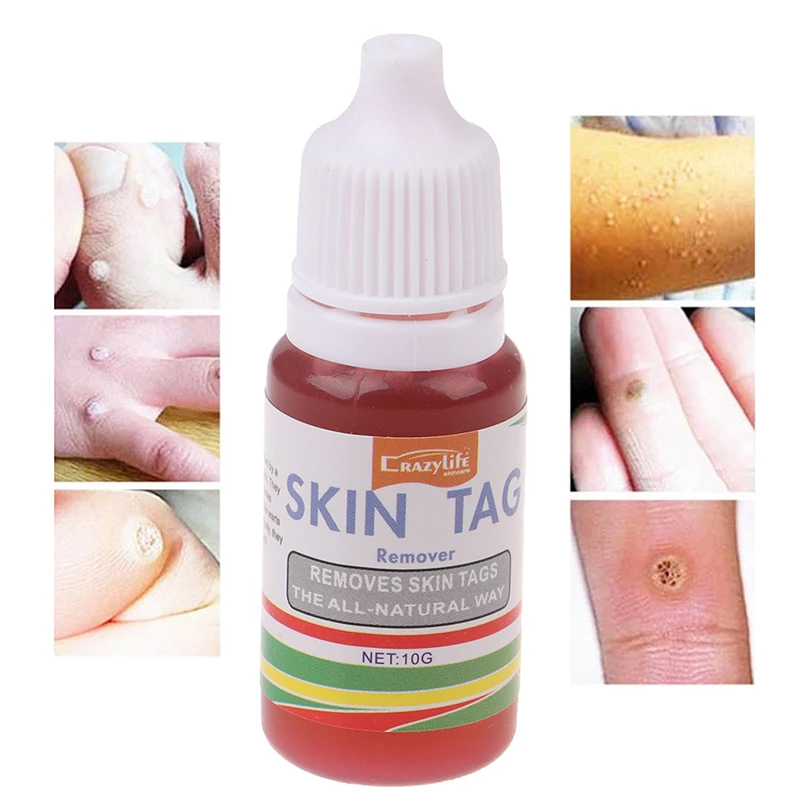
Does the duration of self-resolution differ between children and adults? Yes, children and teenagers may see plantar warts disappear naturally within 1-2 years, while adults might experience a longer waiting period for spontaneous resolution.
Fast-Acting Natural Remedies for Plantar Warts
For those seeking quick relief from plantar warts, several natural and home remedies can be effective:
- Duct tape method: Cover the wart with duct tape for several days, then remove and soak the area in warm water. Repeat as necessary.
- Over-the-counter wart removers: Products containing salicylic acid can gradually remove dead tissue.
- At-home cryotherapy: Some OTC treatments freeze the wart, similar to professional cryotherapy but less intense.
- Combination treatments: Products that combine freezing action with salicylic acid may provide faster results.
Is the duct tape method scientifically proven? While the duct tape method is considered harmless, its effectiveness is not conclusively proven by scientific studies. However, many people report success with this home remedy.
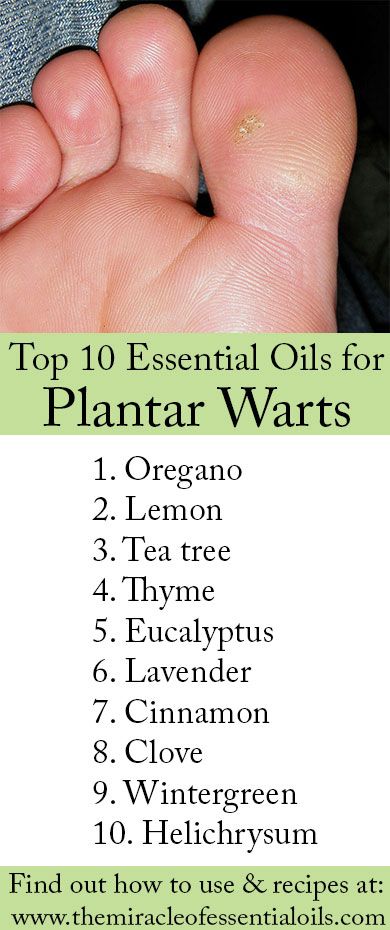
Steps for Using Salicylic Acid Treatments
To maximize the effectiveness of salicylic acid treatments:
- Wash the affected area thoroughly
- Soak the foot in warm water to soften the skin
- Dry the area completely
- Apply the salicylic acid product as directed
- Repeat the process consistently for several weeks
How long does it typically take for salicylic acid treatments to work? While individual results may vary, it often takes several weeks of consistent application to see significant improvement or complete removal of the wart.
Professional Medical Treatments for Rapid Wart Removal
When home remedies prove ineffective or a faster solution is desired, healthcare providers can offer several treatment options:
- Cryotherapy with liquid nitrogen: May require multiple treatments every few weeks
- Prescription-strength wart medications: Often contain higher concentrations of salicylic acid
- Blistering agents: Medications like cantharidin create a blister under the wart, facilitating removal
- Laser treatment: Cauterizes blood vessels supplying the wart
- Immunotherapy: Boosts the body’s natural defense against the virus
- HPV vaccine: May help, although not specifically targeted at plantar wart-causing strains
- Minor surgery: Reserved for stubborn warts that don’t respond to other treatments
Which professional treatment is considered most effective for stubborn plantar warts? Cryotherapy with liquid nitrogen is often considered highly effective, especially when combined with other treatments like salicylic acid application. However, the most suitable treatment can vary depending on the individual case and should be determined by a healthcare professional.

Comparing the Efficacy of Home Remedies and Medical Treatments
While both home remedies and medical treatments can be effective, their success rates and treatment durations often differ:
| Treatment Type | Effectiveness | Treatment Duration | Side Effects |
|---|---|---|---|
| Home Remedies (e.g., duct tape, OTC products) | Moderate | Weeks to months | Minimal |
| Professional Cryotherapy | High | Multiple sessions over weeks | Potential blistering, pain |
| Prescription Medications | High | Weeks to months | Skin irritation |
| Laser Treatment | Very High | 1-3 sessions | Pain, potential scarring |
Do medical treatments always outperform home remedies? Not necessarily. While medical treatments often work faster and may be more effective for stubborn warts, many people successfully treat plantar warts with home remedies. The choice between home and medical treatments depends on factors such as wart persistence, pain levels, and personal preference.
When to Seek Professional Medical Advice for Plantar Warts
While many plantar warts can be managed at home, certain situations warrant a visit to a healthcare provider:

- Uncertainty about the diagnosis
- Warts that don’t respond to self-care treatments
- Recurring warts
- Warts that cause significant pain or interfere with daily activities
- Numerous or spreading warts
- Warts in individuals with diabetes or compromised immune systems
How can you determine if a growth is a plantar wart or something more serious? If you’re unsure about a growth on your foot, especially if it changes in size, color, or causes increasing pain, it’s best to consult a healthcare professional for an accurate diagnosis and appropriate treatment plan.
Preventing Plantar Warts: Hygiene and Protective Measures
Prevention is key in managing plantar warts. Here are some effective strategies to reduce the risk of contracting or spreading plantar warts:
- Keep feet clean and dry
- Wear sandals or water shoes in public showers, locker rooms, and pool areas
- Avoid walking barefoot in public spaces
- Don’t share towels, socks, or shoes with others
- Change socks daily, especially if feet tend to get sweaty
- Keep existing warts covered to prevent spread
- Strengthen your immune system through a healthy diet and lifestyle
Can plantar warts spread to other parts of the body? Yes, plantar warts can spread to other areas of the foot or to the hands if the virus comes into contact with broken skin. It’s important to avoid touching or scratching warts and to wash hands thoroughly after treating them.

The Role of Footwear in Wart Prevention
Proper footwear plays a crucial role in preventing plantar warts:
- Choose breathable shoes to keep feet dry
- Rotate shoes to allow them to dry completely between uses
- Use moisture-wicking socks to reduce foot sweat
- Ensure shoes fit properly to avoid blisters or cuts that could provide entry points for the virus
How often should you replace your athletic shoes to maintain good foot health? Generally, it’s recommended to replace athletic shoes every 300-500 miles of use or every 6-8 months, whichever comes first. This ensures proper support and reduces the risk of foot injuries that could make you more susceptible to plantar warts.
Long-Term Management and Recurrence Prevention of Plantar Warts
Even after successful treatment, plantar warts can recur. Long-term management strategies include:
- Regular foot inspections to catch new warts early
- Prompt treatment of any new warts
- Maintaining good overall health to support immune function
- Continuing preventive measures even after warts have resolved
- Considering immunotherapy or HPV vaccination if warts are frequent or persistent
What percentage of people experience plantar wart recurrence? Studies suggest that up to 30% of people may experience a recurrence of plantar warts within 3 years of initial treatment. However, this rate can be reduced with proper prevention and management strategies.
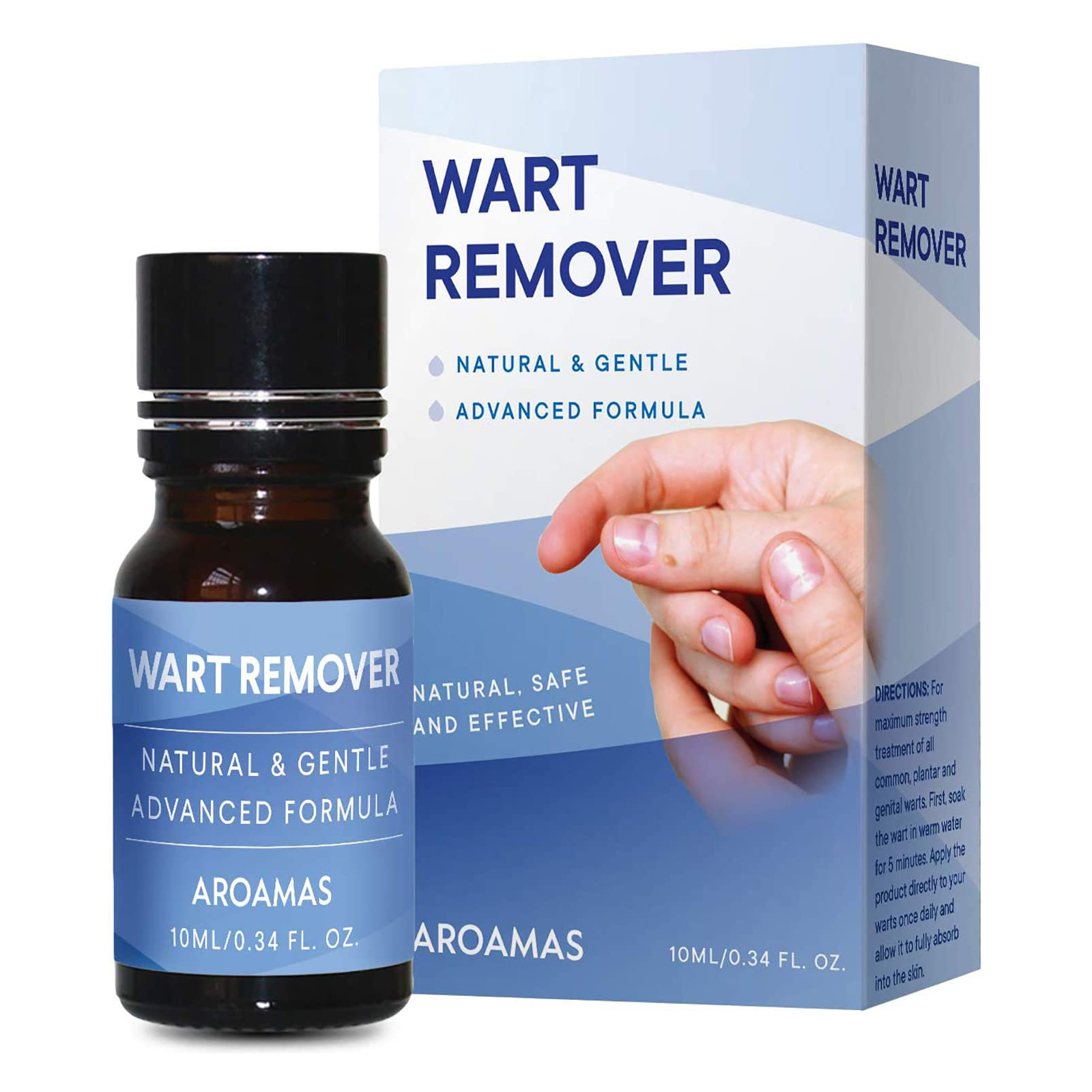
The Impact of Stress on Wart Recurrence
Stress can play a role in the recurrence of plantar warts by weakening the immune system. To mitigate this:
- Practice stress-reduction techniques like meditation or yoga
- Ensure adequate sleep
- Maintain a balanced diet rich in immune-boosting nutrients
- Exercise regularly to reduce stress and boost overall health
How does stress affect the immune system’s ability to fight wart-causing viruses? Chronic stress can suppress immune function, making it harder for the body to fight off viruses, including those that cause plantar warts. Managing stress through healthy lifestyle choices can help maintain a strong immune system, reducing the risk of wart recurrence.
Understanding Plantar Wart Treatment
Plantar warts are a common viral infection caused by the human papillomavirus (HPV) in the soles of the feet. Most plantar warts are not a serious health concern. They may even go away without treatment. However, it can take a year or two. There are several effective lifestyle and home remedies for treating plantar warts and getting rid of them sooner. Please continue reading to learn more. We will also talk about when you should see a doctor to treat plantar warts.
What causes plantar warts?
Plantar warts develop when the HPV virus (the wart-causing virus) enters the skin through cuts and abrasions in the skin of the feet. Certain people are at a higher risk of developing plantar warts or having more warts that are difficult to control. Risk factors include:
- Children and adolescents.
- Weak immune systems.
- Chronic skin conditions such as eczema.
- Diabetes (poor sensation in the feet).

- Those who have had plantar warts occur previously.
- Walking barefoot in public areas such as locker rooms and swimming pools where wart-causing viruses are prevalent.
What do plantar warts look like?
Plantar warts start out by looking like a small, rough, grainy patch on the sole of the foot. They are more likely to develop in pressure-bearing areas, such as the heels and balls of the feet. The warts can appear lighter in dark-colored (brown or black) skin. If a wart grows inwards, the thickened skin cells may appear like a callus. You may be able to see wart seeds, which are black dots representing tiny clotted blood vessels in the wart. Sometimes, plantar warts occur in clusters called mosaic warts. Plantar warts tend to interrupt the normal lines and ridges in the skin. You may have pain and tenderness when standing or walking.
Can a plantar wart go away on its own?
Yes, a plantar wart can go away on its own. You may not need to treat warts. The infected tissue eventually dies, and the warts may disappear without treatment. But it can take 1-2 years in children and teenagers, maybe longer in adults.
You may not need to treat warts. The infected tissue eventually dies, and the warts may disappear without treatment. But it can take 1-2 years in children and teenagers, maybe longer in adults.
What is the fastest way to get rid of a plantar wart naturally?
To get rid of plantar warts quickly, you can try lifestyle and home remedies such as:
Duct tape
Using duct tape is a harmless but unproven approach to removing warts. It involves soaking the skin in warm water, allowing it to dry, and then covering it with silver duct tape for several days to remove dead skin. You may need to repeat the process several times.
Nonprescription wart removal products
Over-the-counter patches, gels, and liquid wart removers contain salicylic acid, which can gently remove dead tissue. The treatment involves washing the affected skin, soaking it in warm water to soften it, and letting it dry before you apply salicylic acid. It can be several weeks before the wart disappears.
Over-the-counter treatment using cryotherapy
Some over-the-counter wart treatments, such as Dr. Scholl’s Freeze Away and Compound W Freeze Off, work by freezing off the wart. Use these products with caution around heat sources like flames, cigarettes, and curling irons because they are flammable.
Combination treatments
The fastest way to get rid of warts may be to use topical treatment such as Dr. Scholl’s Dual Action Freeze Away Wart Removal, which contains medicine to freeze the wart as well as salicylic acid to break it down.
What is the quickest way to get rid of a plantar wart?
If home treatments do not help or you want to get rid of warts sooner, your healthcare provider may offer surgical or other procedures, such as:
- Cryotherapy (freezing) treatment using liquid nitrogen. You may need to repeat treatments every few weeks until the wart falls off.
- Prescription-strength wart medications containing salicylic acid.
 These may help to boost your immune response as well. You can apply the medicine at home and go to the doctor’s office periodically. These medicines can take several weeks to get rid of the warts.
These may help to boost your immune response as well. You can apply the medicine at home and go to the doctor’s office periodically. These medicines can take several weeks to get rid of the warts. - Blistering medicine such as cantharidin creates a blister below the wart. You will be asked to return in 7-10 days to get the dead wart clipped.
- Laser treatment to cauterize (burn) the tiny blood vessels in the wart, causing it to die. You will likely need to repeat this treatment 1-2 times a month.
- Immune therapy to help your immune system fight viral warts.
- HPV vaccine (this vaccine does not target the HPV strains that cause plantar warts, but it may help).
- Minor surgery (electrodessication and curettage). This treatment can be painful. It also carries a risk of leaving a scar behind, which can be painful. Surgery is reserved for plantar warts that have not responded to other treatments.
Should I see a doctor to treat plantar warts?
You should see a health care provider for plantar wart removal if:
- You are not sure whether it is plantar warts or something else.

- Your plantar warts have not responded to self-care treatments or keep coming back.
- The warts have changed in shape or color.
- You have bleeding or pain that interferes with normal activities.
- You have diabetes, HIV, a weak immune system, or other immune system disorders.
How to prevent plantar warts?
Every person reacts differently to HPV. Some people develop plantar warts upon exposure to the virus, while others do not. The strains of HPV that cause plantar warts are not very contagious and do not spread easily from person to person. You can prevent warts or at least lower your risk of developing warts with the following strategies:
- Avoid walking barefoot in public areas like swimming pools and locker rooms that harbor wart-causing viruses.
- Keep your feet clean and dry.
- Handle your own warts carefully. Avoid direct contact with your hands. Wash your hands carefully with soap and water after touching the warts.

- Do not pick or scratch warts. This can spread wart viruses to other parts of your feet and body.
- Use a separate nail clipper, emery board, and pumice stone on skin affected by plantar warts and unaffected skin (healthy skin).
References:
- https://www.mayoclinic.org/diseases-conditions/plantar-warts/symptoms-causes/syc-20352691
- https://www.uptodate.com/contents/common-warts-plantar-warts-and-flat-warts-beyond-the-basics/print#
Elliott M. Perel, DPM, FACFAS: Podiatrist
How Laser Treatment Gets Rid of Your Warts: Elliott M. Perel, DPM, FACFAS: Podiatrist
Plantar warts are raised, fleshy growths on the soles of your feet caused by a viral infection. They’re the same type of warts that show up on your hands, but they’re named for their location on the body.
Podiatric physician and surgeon Dr. Elliott Perel and his team at Monroe Foot & Ankle Care understand that plantar warts can be both uncomfortable and embarrassing, even if they’re not a serious condition. That’s why they offer a number of treatment options for their patients in Jamesburg, New Jersey, including laser treatment.
That’s why they offer a number of treatment options for their patients in Jamesburg, New Jersey, including laser treatment.
What causes wart formation?
Plantar warts are caused by certain variants of the human papillomavirus (HPV), though none are the type that causes genital warts. In fact, these HPV strains aren’t spread easily from one person to another. They need a suitable environment, one that’s warm and moist, just like you’d find around a swimming pool or locker room. That’s why walking barefoot in such areas isn’t advisable.
The virus enters your body through small tears in the skin of your feet. Your body weight presses down on the entry point, causing it to thicken and become callused as the wart grows deeper into the skin.
Warts aren’t a major health threat, but the calluses can be uncomfortable, and the virus, once entrenched, can spread to other locations. In addition, you may have some pain and/or minor bleeding at the site.
HPV is pretty much an “equal opportunity” invader, but those at the most risk are children and teenagers (who aren’t as careful about foot care), immunocompromised individuals, people who’ve had an HPV infection before, and, of course, anyone who walks barefoot in a public locker room.
Why should you remove warts?
Warts aren’t medically dangerous, but they still affect your podiatric health.
Having plantar warts means you have a viral infection. Even viruses that aren’t particularly contagious are still masters of replicating themselves, so you may go from having a single, uncomfortable wart to a bunch at one time. And being infected makes you more vulnerable to becoming reinfected.
Developing clusters of warts may also mean your immune system is compromised in some way, which fuels the infection. You should make an appointment with your primary care physician to determine if you have an underlying condition that needs to be treated.
In addition, warts that cause you pain or other discomfort can have widespread consequences. It’s natural to shift the way you walk to avoid putting weight on the uncomfortable wart. However, that alters your body mechanics, which may lead to developing additional pain in your feet, legs, and even your back. Removing plantar warts can help you avoid all these problems.
Removing plantar warts can help you avoid all these problems.
Treating foot warts
Most warts eventually clear up by themselves, but it can take about two years, which is pretty long to wait, especially if you’re having symptoms. Fortunately, Dr. Perel offers several treatment options, including laser treatment.
A pulsed-dye laser is the primary type of laser used to remove warts. The light heats up the tiny blood vessels inside the wart, destroying them. Without blood, the wart can’t survive and falls off. The laser’s heat may also target the virus that causes the wart.
You may experience a sensation like a rubber band snapping against your skin during treatment, but you won’t feel much pain after the procedure is done. You’ll be fully healed in 2-4 weeks.
A carbon dioxide laser is another option; it’s as effective as a sharp knife. First, Dr. Perel uses the laser to cut away the top of the wart. Next, he makes the light a bit less focused, so it burns away the rest.-Step-17.jpg) You may have more scarring with this treatment than you’d get from a pulsed-dye laser.
You may have more scarring with this treatment than you’d get from a pulsed-dye laser.
Both lasers can stir up debris that may include the virus, a definite downside, but the benefits usually outweigh the risks.
If you’re dealing with plantar warts and want an effective way of getting rid of them, laser treatment may be right for you. To learn more and schedule a consultation with Dr. Perel, give Monroe Foot & Ankle Care a call at 732-521-6166 or book online with us today.
Why Do I Feel Like There’s a Pebble in My Shoe When Walking?
If you constantly feel like there’s a pebble in your shoe, especially if it’s accompanied by pain between the toes, you may have a condition called Morton’s neuroma. Keep reading to learn what it is and what we can do to relieve your discomfort.
Can Toenail Fungus Spread to Your Fingernails?
If you’re dealing with the unsightly appearance of toenail fungus, you may wonder if it could spread to your fingernails. We’ve got the answer for you here.
We’ve got the answer for you here.
The Early Warning Signs of Ingrown Toenails
Ingrown toenails are more than just a painful nuisance. Proper treatment is necessary to prevent a serious infection. Keep reading to learn the early warning signs so you’ll know when to seek medical help.
How Rheumatoid Arthritis Breeds Bunions
Many people are familiar with bunions, a misaligned joint at the base of the big toe, but they don’t know how rheumatoid arthritis can aggravate their development. We’ve got the answer here.
The Link Between Obesity and Heel Pain
Did you know there’s a link between how much you weigh and the development of heel pain? Find out more about the connection here.
Are Warts Contagious?
Warts are ugly, uncomfortable, and a little embarrassing, but are they contagious? We’ve got the scoop for you here.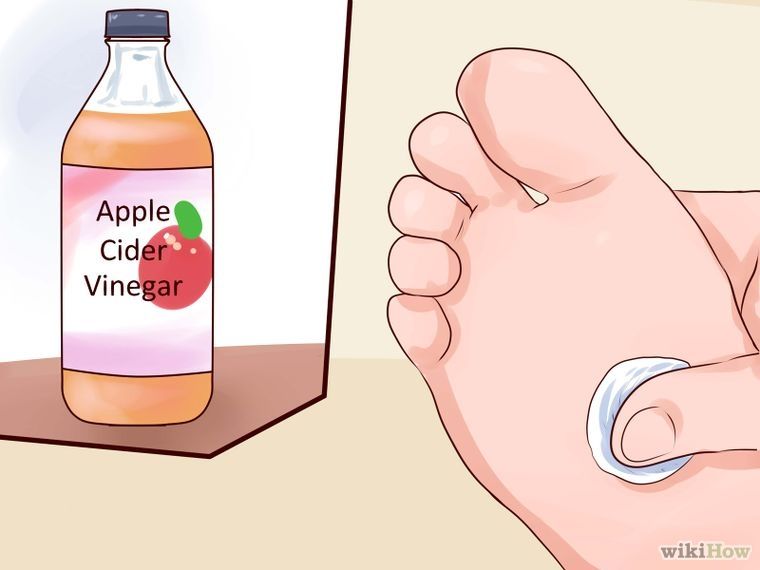
Removal of plantar warts in Moscow, prices
Irina K.
The doctor is a professional. Repeatedly treated the child, including with difficult cases, always received high-quality advice and effective treatment. We are very much looking forward to returning from vacation.
Dec 15 2022
Elmira Suleymanova
I want to express my deepest gratitude to just a professional in his field! I have always had problem skin. Whenever I tried to cure acne, the attempts were in vain. I visited many dermatological centers and clinics, but there was no result from them. And I am very grateful that I accidentally stumbled upon Anna Igorevna (I chose this particular clinic based on the positive feedback of my friend). In just 3 months, I managed to get rid of acne of various types. Only traces remained, which are now in the process of treatment with medicines and cosmetic procedures. In general, if you have the same problem as me, feel free to contact this specialist, you will not regret it! I write this as a person who has something to compare with)
Dec 21 2022
Aleinikova L.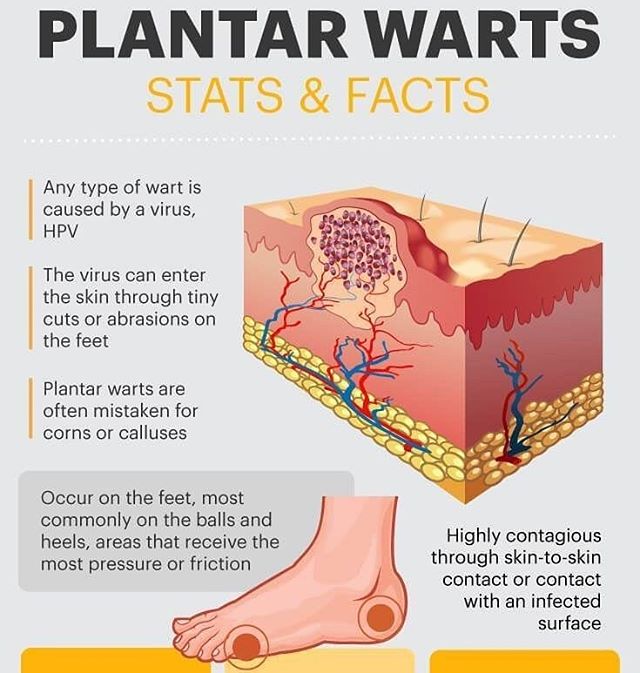 V.
V.
As a guest of Moscow, he visited the neurologist Belavin S.V. and oncologist Bagryantsev M.E. I did an ultrasound at Kondratenko M.O. Trust in doctors is deep. Belavin S.V. cured PNP. The main thing was to identify, prescribe a treatment that helped INSTANTLY! Thank you oncologist. Thoughtful, serious, alert.
Kondratenko M.O. explained and advised and comforted. Here is the device for you. Low bow!!! I heard from the doctor: “Go and live! We helped you!”
Jun 18 2020
Maria
I want to express my gratitude to Oksana Vasilievna for her attentive attitude to the patient, to his problem, and for her high professionalism. A very competent doctor!
Mar 25 2020
Maria
Great doctor, knows his stuff. Always responsive and gives good advice. The whole family sees her
May 4, 2022
Hope
I would like to thank Marina Anatolyevna. Although we were not her patient, she took care of us, transferred us to another specialist, told us about our problem, explained what needs to be done.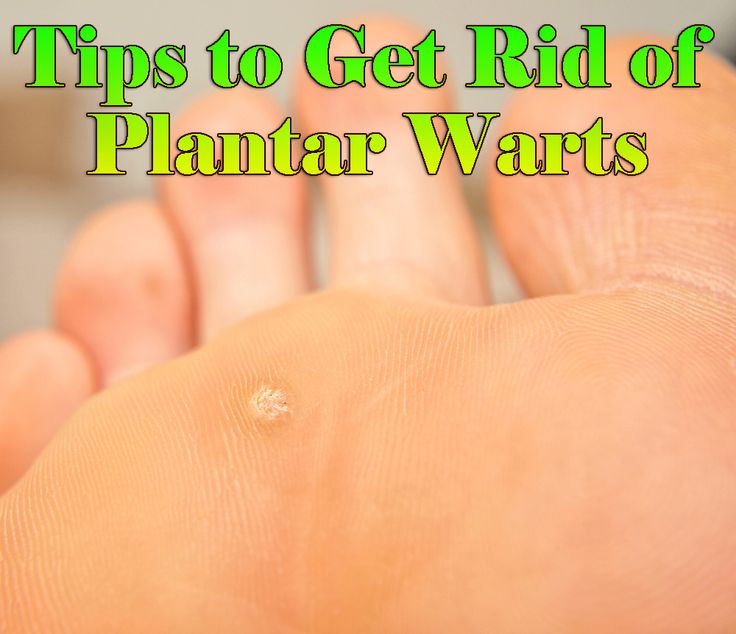
Oct 5 2018
Natalia
Olga Alexandrovna, a very experienced doctor. Doctor with a capital letter. Very, very grateful to her. I’m not the first time and as always on top. I am grateful that there is such a doctor, he will always tell you what and how you need it.
Dec 7 2022
Irina
Olga Alexandrovna is a wonderful doctor. The prescribed treatment worked well, after many years, many doctors and attempts to get the skin in order. And a purely human nice girl
Dec 5 2021
Ekaterina
I express my deep gratitude to Marina Anatolyevna! Thanks for your attention and help!
Dec 14 2020
Elizabeth
I want to express my deep gratitude to Ogneva Anna Igorevna!!! For several years since my teenage years, I have had skin problems: constant breakouts, blackheads, oiliness and uneven complexion. Thanks to all the prescribed tests, I was finally able to figure out the reason why I had skin problems. And thanks to a well-constructed treatment system and effective procedures that Anna Igorevna does very carefully and carefully, after three months my skin finally became clean and radiant, which it had never been before! Even during self-isolation in Moscow, without supporting procedures, the skin remained well-groomed and clean for another 5 months! And only then did single rashes begin to appear, which were small and passed quickly.
And thanks to a well-constructed treatment system and effective procedures that Anna Igorevna does very carefully and carefully, after three months my skin finally became clean and radiant, which it had never been before! Even during self-isolation in Moscow, without supporting procedures, the skin remained well-groomed and clean for another 5 months! And only then did single rashes begin to appear, which were small and passed quickly.
9 Sept. 2020
Elena Sencheva
Anna Olegovna is a wonderful beautician! I have been going to the procedures for several years, I like everything very much. Anna Olegovna is very attentive and accurate – a professional in her field. Doesn’t impose anything extra. Everything is clear and to the point. You always leave in a great mood! With many care instructions. A cosmetologist you can trust, which is very valuable in our time!
21 Apr. 2023
Ivan
Thank you very much Anna Olegovna. The most polite and experienced doctor, a master of his craft. It can be seen from the person how she values \u200b\u200beach patient and sincerely helps and heals.
The most polite and experienced doctor, a master of his craft. It can be seen from the person how she values \u200b\u200beach patient and sincerely helps and heals.
25 Feb. 2021
Ivanova Ekaterina
Great doctor! I removed the warts several times, everything quickly passed without negative consequences. All procedures were carried out quickly and efficiently. Thank you very much!
Jul 23 2019
Ekaterina
Good afternoon I want to leave a review after visiting the dermatologist Volkova Marina Anatolyevna. She had a dermatoscopy in Kurkino. After visiting such doctors, you leave with a feeling of lightness in your soul and that everything will be fine. Very caring doctor and nice lady.
25 Apr. 2016
Tatyana
Lyubov Anatolyevna is a doctor of the highest category, a professional in her field! I applied with the problem of skin formation, which the doctor successfully and painlessly removed, having previously deeply studied the problem, and relieving me of my worries.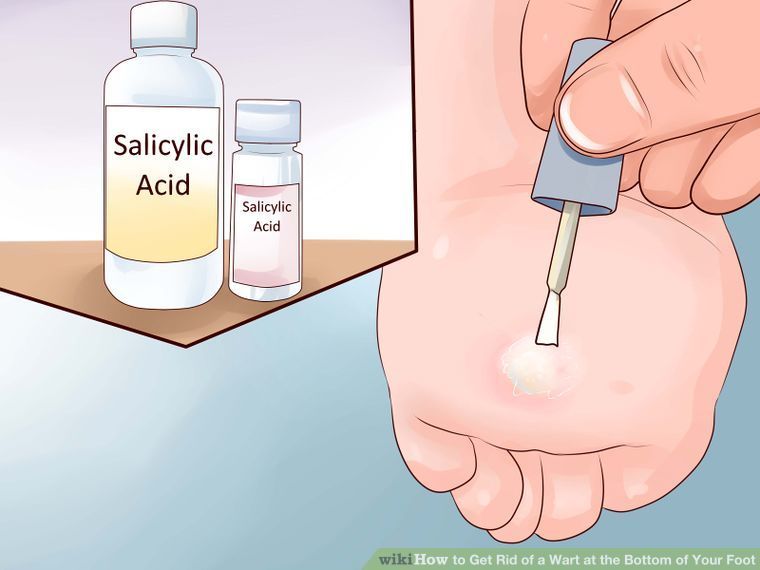 Reception is calm, clearly asks questions and gives clear instructions. Thank you very much! Tatiana
Reception is calm, clearly asks questions and gives clear instructions. Thank you very much! Tatiana
1 Apr. 2022
Morozovskaya O.D.
The doctor did a good job. Communicated with kindness and empathy. Thanks for the service.
May 16, 2021
Olga
Maria Alekseevna, as they say, is a person in her place. A pleasant doctor, polite, listened to everything, understood correctly, received all the recommendations, explained very clearly what and how. I advise everyone who has problems with dermatology. After visiting Maria Alekseevna, I got a positive mood.
Mar 4 2021
Elena
In my review, I express my deep gratitude to Anna Igorevna and the administration of the clinic. My problem was so to speak “on the face”. Terrible acne, oily skin, uneven complexion, there was no living place on the face! I was terribly shy, it was unpleasant to look at myself in the mirror. After a year of unsuccessful visits to various specialists (cosmetologists, dermatologists), I turned to the IMMA clinic. The doctor ordered blood tests, took a sample from the skin and also sent it to a gynecologist and a gastroenterologist to exclude the presence of any internal inflammations/diseases. As a result, each doctor said his word and prescribed treatment, and with Anna Igorevna we began a course of peelings and plasma therapy + drug treatment. As a result, in three months the skin became clear, rashes rarely appear (1,2) and quickly disappear. I have never had such clear and radiant skin! I will definitely continue to see the doctor until the imperfections of my skin are completely eliminated.
The doctor ordered blood tests, took a sample from the skin and also sent it to a gynecologist and a gastroenterologist to exclude the presence of any internal inflammations/diseases. As a result, each doctor said his word and prescribed treatment, and with Anna Igorevna we began a course of peelings and plasma therapy + drug treatment. As a result, in three months the skin became clear, rashes rarely appear (1,2) and quickly disappear. I have never had such clear and radiant skin! I will definitely continue to see the doctor until the imperfections of my skin are completely eliminated.
19 Apr. 2019
Balandin M.
Maria Alekseevna is a wonderful doctor: friendly, attentive, competent. After conducting a full examination and receiving the results of the tests, she prescribed an effective and inexpensive treatment. I am very grateful to her for human care and help in solving the problem.
May 10, 2021
Tatyana K.
I would like to sincerely thank Oksana Vasilievna Minkina, a unique dermatologist at your clinic on Yugo-Zapadnaya. In a situation where even the KDL analysis did not confirm her assumptions about the diagnosis, relying solely on her own clinical experience, O.V. Minkina prescribed treatment – simple and inexpensive (which is especially valuable!). The result – in a month, as the doctor predicted, all my dermatological problem is a thing of the past. THANK YOU for the highest professionalism and sensitive attitude!!!
Jan 20 2016
price in Moscow for laser removal of a wart on the sole
Home > Services > Hardware cosmetology > Removal of plantar warts with a laser
from 750 rubles
- Scanning the affected area with a dermatoscope
- Apply anesthetic gel to the damaged area
- Vaporizing affected cells with laser
- We treat the area with an antiseptic agent
Causes
Symptoms
Necessity
Procedure
Contraindications
Prices
Plantar warts are benign growths in the form of indurations of the skin with a slight yellow tint. They are localized on the foot, which makes them vulnerable to mechanical impact and frequent damage. Long walking is painful, and wearing shoes causes discomfort. This situation can be corrected with the help of laser removal. Radiation will quickly rid the skin of local lesions, making it cleaner and healthier.
They are localized on the foot, which makes them vulnerable to mechanical impact and frequent damage. Long walking is painful, and wearing shoes causes discomfort. This situation can be corrected with the help of laser removal. Radiation will quickly rid the skin of local lesions, making it cleaner and healthier.
Causes of appearance
Warts in the plantar area indicate the development of the human papillomavirus (HPV) in the body. It is often transmitted through household contact with infected surfaces, getting into wounds and microcracks in open areas of the body. The virus retains its pathogenic qualities for the longest time in warm and humid conditions, so the places of greatest risk of infection are baths, saunas or pools.
The level of danger is increased by factors such as:
- Perspiration disorders
- Excessively dry feet
- Mechanical damage in the plantar region
- Diabetes mellitus
- Anatomical changes of the foot
Symptoms
The formations themselves look like hard, round growths that rise slightly above the surface of the skin. Their diameter can be either 2-3 mm or several centimeters. The color of warts is most often flesh, but sometimes as a result of constant mechanical stress, sweating of the legs and other factors, they acquire a darker shade.
Their diameter can be either 2-3 mm or several centimeters. The color of warts is most often flesh, but sometimes as a result of constant mechanical stress, sweating of the legs and other factors, they acquire a darker shade.
At first, the surface of the papules appears smooth, but over time, peeling appears on it. The texture becomes more bumpy, and a small indentation may appear in the center. This is a consequence of the internal growth of the epithelium.
Is it necessary to remove warts
In general, papillomas of this type do not pose a danger to life and health, but can bring great discomfort. With the active development of the virus, any pressure on the warts while walking leads to infection of healthy tissues, so that soon there are more affected areas. Having reached a massive size, they will begin to compress the nerve endings, which will cause regular pain in the legs.
Since the feet bear most of the weight of the body, they experience a strong load and the intensity of pain can be significant. In this case, laser removal will help eliminate the cause of discomfort, getting rid of plantar formations.
In this case, laser removal will help eliminate the cause of discomfort, getting rid of plantar formations.
Take the test and get up to 50% off!
Answer 8 questions and we will select treatments especially for you! Bonuses and free consultation of a cosmetologist for new clients.
Pass test
Course of the procedure
The complexity of using the laser technique lies in the growth of the affected area deep under the skin. Because of this, heat treatment of the pigment can be painful or injure nearby tissues. Modern devices are based on selective action and have a built-in cooling system, which greatly reduces the risk of injury.
Before the procedure, the master adjusts the depth and power of the laser exposure by first scanning the skin with a dermatoscope. It allows you to identify the features of the structure of the epithelium and the affected areas in order to correctly set the parameters. The area to be treated is then covered with an anesthetic composition or a local anesthetic is injected. The giving session lasts 2-3 minutes. This is followed by a recovery period of several weeks.
The giving session lasts 2-3 minutes. This is followed by a recovery period of several weeks.
Contraindications
Because the laser heats pigmented cells to very high temperatures, the procedure can be uncomfortable. There are a number of limitations under which exposure to laser pulses is dangerous or will not be effective. For example:
- Exacerbations of chronic diseases
- Fever
- Decompensated diabetes mellitus
- Malignant neoplasms
- Pregnancy and lactation
- Poor blood clotting
Laser wart removal in “Details”
In our clinic, you can quickly get rid of plantar warts without the risk of damaging healthy skin. Details is an outstanding cosmetology salon in the center of Moscow, which uses only new certified equipment in its practice, which ensures the safety of the procedure and brings sustainable results. We carefully determine the prices of services, trying to make the beauty industry accessible to everyone.
Expert of the article you are reading:
Oksana Vyacheslavovna Pastukhova
Cosmetologist, dermatologist, trichologist. Chief physician of the clinic “Details”.
Graduated from the Moscow Medical Academy. THEM. Sechenov with a degree in General Medicine.
Plantar wart removal with anesthesia
1 pc.
RUB 900
From 2 to 10 pcs.
RUB 850
Over 10 pcs.
RUB 800
Removal of plantar warts without anesthesia
1 pc.
RUB 850
From 2 to 10 pcs.
RUB 800
Over 10 pcs.
750 rubles
Prices may change. For clarification, call +7 (495) 988-59-90
Doctors and specialists
Pastukhova Oksana Vyacheslavovna
Cosmetologist, dermatologist, trichologist. Chief physician of the clinic “Details”.
Tensina Anna Vyacheslavovna
Cosmetologist, dermatologist
Yurmina Svetlana Svyatoslavovna
Cosmetologist, dermatologist
Fadeeva Anna Nikolaevna
Cosmetologist, dermatologist of the clinic of cosmetology “Detali”
Pakhomova Aneta Ivanovna
Cosmetologist, dermatovenereologist
Petrosyan Elena Georgievna
Cosmetologist, dermatologist.
Promotions and special offers
Reviews about us
Sofya Yakovlevna Golovina
07/22/2022
Good afternoon everyone, I have been visiting this center for several years, I am very pleased with everything, good and helpful staff, I especially want to note Aneta Ivanovna as cool a specialist, a true professional in his field, I recommend everyone to visit this center, I’m sure you will not regret
Samigullina Camila
07/20/2022
I was looking for a beautician to clean my face according to reviews and did not regret it. Although the procedure is not very pleasant, but I was very pleased with the result and the master. Cleaned my problematic skin very well in several stages, my face became pleasant and smooth. Thank you
Irina Viktorovna
07/18/2022
I am very pleased with the eyebrow tattoo, everything is delicate and painless! Olga Derbeneva is a master of her craft! Thank you!
Fafonkina Elena
18.


 These may help to boost your immune response as well. You can apply the medicine at home and go to the doctor’s office periodically. These medicines can take several weeks to get rid of the warts.
These may help to boost your immune response as well. You can apply the medicine at home and go to the doctor’s office periodically. These medicines can take several weeks to get rid of the warts.
